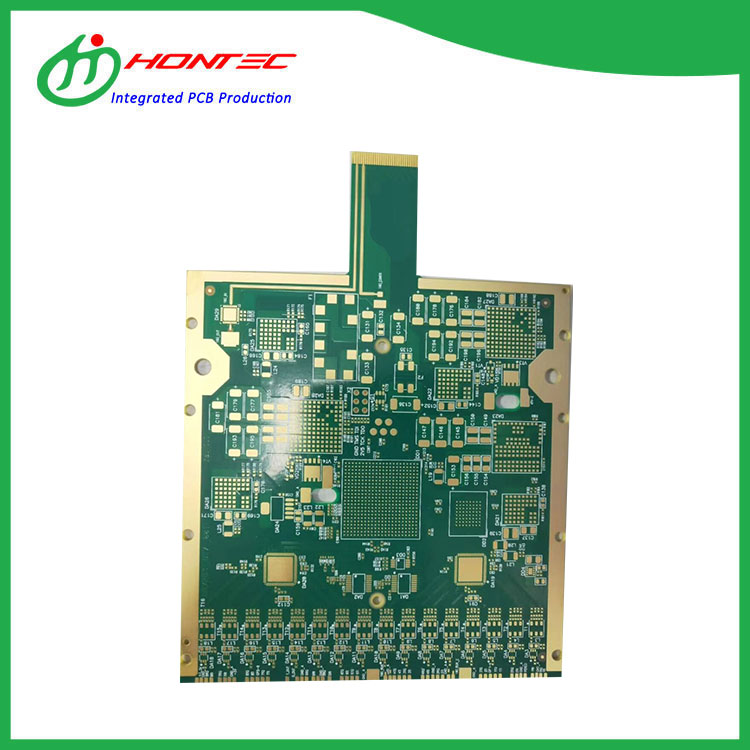Understanding ENEPIG PCB – The Latest Technology in Electronics and Semiconductor Industries
2025-02-17
In the rapidly evolving world of electronics and semiconductors, the demand for advanced technologies that improve the performance, durability, and efficiency of printed circuit boards (PCBs) is growing. One such breakthrough is ENEPIG PCB, which is making waves for its exceptional properties and benefits. ENEPIG, which stands for Electroless Nickel Electroless Palladium Immersion Gold, is a cutting-edge coating technology used primarily in the electronics and semiconductor industries. In this blog, we’ll dive into what ENEPIG is, its benefits, and why it’s becoming a crucial component in modern circuit boards.
What is ENEPIG PCB?
ENEPIG PCB refers to a specialized coating process for printed circuit boards that involves a combination of gold plating, palladium plating, and nickel plating. The ENEPIG process involves layering these materials in a specific order, which results in a PCB with superior electrical properties, mechanical durability, and corrosion resistance. The process is applied in multiple stages:
1. Nickel Plating: The first layer is electroless nickel, providing a base layer that enhances adhesion and offers corrosion resistance.
2. Palladium Plating: A thin layer of palladium is then deposited over the nickel. This coating offers excellent resistance to oxidation and improves the overall conductivity of the PCB.
3. Gold Plating: Finally, a thin layer of gold, usually around 10 nm thick, is applied over the palladium. Gold is known for its excellent conductivity and resistance to corrosion, making it the perfect final layer for reliable electrical connections.
The combination of these three materials makes ENEPIG PCB a highly effective solution for applications requiring superior performance and durability.
Key Benefits of ENEPIG PCB
1. Superior Conductivity:
One of the primary reasons ENEPIG is becoming increasingly popular is its ability to provide excellent conductivity. Gold, in particular, is well-known for its ability to conduct electricity without significant resistance. The thin 10 nm layer of gold on ENEPIG PCBs ensures that electrical connections remain stable and efficient, even in high-frequency circuits.
2. Corrosion Resistance:
The palladium layer (50 nm thick) used in ENEPIG provides enhanced resistance to corrosion, especially in harsh environments. Palladium is highly resistant to oxidation, ensuring that the PCB will maintain its functionality over time, even when exposed to moisture or other corrosive elements. This makes ENEPIG PCBs ideal for industries where long-term durability is essential, such as in aerospace, automotive, and industrial equipment.
3. Friction Resistance:
The palladium and gold layers also contribute to the friction resistance of ENEPIG PCBs. This is particularly important for connectors and solder joints, where mechanical wear can cause issues in performance. The smooth, durable coatings help reduce wear and tear, ensuring that connections remain intact even after repeated use.
4. Improved Mechanical Strength:
The nickel layer beneath the palladium plating adds mechanical strength to the PCB, making it more resilient to physical stress, bending, or vibration. This makes ENEPIG PCBs suitable for high-reliability applications where physical integrity is crucial.
5. Fine Pitch Soldering:
ENEPIG PCBs are also preferred for fine-pitch soldering applications. The smoothness and uniformity of the coating layers enable precise and reliable soldering of small components, which is especially important in advanced electronics like smartphones, laptops, and medical devices.
6. Reduced Cost of Ownership:
Due to the longevity and durability of ENEPIG PCBs, they can lead to reduced maintenance and replacement costs. The corrosion and wear resistance of these PCBs result in fewer failures, making them a more cost-effective solution over time, despite potentially higher initial production costs.
Applications of ENEPIG PCB
ENEPIG PCB coatings are particularly valuable in sectors where the demand for high-quality, reliable, and long-lasting circuit boards is paramount. Some of the most common applications include:
- Semiconductor Industry: ENEPIG is used for flip-chip bonding, wire bonding, and other high-performance interconnects in semiconductors.
- Consumer Electronics: Devices like smartphones, tablets, and laptops benefit from ENEPIG-coated PCBs due to their excellent conductivity and durability.
- Automotive Industry: The automotive sector uses ENEPIG PCBs in critical electronic components that must withstand harsh environments and long operational lifespans.
- Medical Devices: For medical equipment, where reliability and longevity are crucial, ENEPIG offers the durability needed to ensure consistent performance in life-saving technologies.
Why is ENEPIG the Future of PCB Coatings?
As electronics continue to get smaller, more powerful, and more complex, the need for advanced materials that can meet these demands increases. ENEPIG coatings offer a unique combination of attributes that address the evolving challenges in the electronics industry:
- Miniaturization: ENEPIG’s fine coating layers are well-suited for miniaturized electronic devices where space and size are critical factors.
- High-Reliability Applications: Industries such as aerospace and automotive require PCBs that can perform reliably under extreme conditions. ENEPIG’s resistance to corrosion, oxidation, and wear makes it an ideal choice for these demanding environments.
- Sustainability: As sustainability becomes a key focus in manufacturing, ENEPIG’s longer lifespan and fewer replacements help reduce the environmental impact of electronic products.
ENEPIG PCB, with its combination of gold, palladium, and nickel plating, is emerging as one of the most advanced PCB coating technologies available today. With its exceptional conductivity, corrosion resistance, friction resistance, and mechanical strength, ENEPIG is setting new standards for the performance and longevity of printed circuit boards. As industries continue to evolve, ENEPIG’s ability to meet the demands of high-reliability applications makes it an essential technology in modern electronics and semiconductors.
Whether you're involved in the design of consumer electronics, semiconductor devices, or automotive components, adopting ENEPIG PCBs can lead to higher-quality, more durable products, ensuring the long-term success and reliability of your systems.



